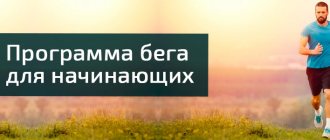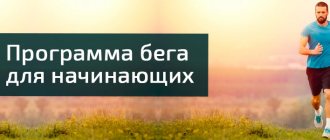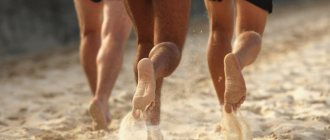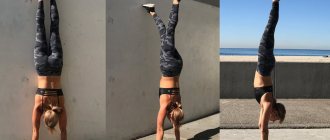There are so many discussions about the benefits of playing sports! How much should you go to the gym, what exercises should you do? The most interesting thing is that people studying these issues locally miss very important details, namely, rest. After all, the recovery period after training is the period of growth of your muscles.
Restoring the body after physical activity also has its own rules and concepts. For example, there are basic disciplines such as sleep and nutrition. Ideally, you need to sleep 8 hours a day in the dark. Then the muscle fibers have time to “come to their senses”, and the utilization of subcutaneous fat tissue occurs more intensively. This means that when we sleep, we also lose weight.
Recovery phases
For better and faster recovery, sports supplements are used . Reception depends on the phase. They are divided into four stages:
- Rapid recovery phase . It starts immediately after the end of the workout and lasts about 30 minutes. At this time, breathing and pulse normalize. Stress hormones – adrenaline and insulin – return to normal. During this period, it is important to properly help the body. An excellent fuel would be BCAA (to enhance the secretion of anabolic hormones), glutamine (restoration of muscle fibers) and creatine (suppression of catabolism).
- Slow recovery phase. Duration from 1 to 3 days. It has been noted that there is a direct dependence on nutrient saturation. The more there are, the faster the body recovers. During this period, active healing of muscle fibers and structures occurs, and protein synthesis is activated. In this phase, it is necessary to ensure that the body receives a sufficient amount of proteins, minerals and other trace elements.
- Supercompensation. Duration about 5 days. During this period, muscle changes occur. That is, the body returns its systems to their original state (as before training) and at the same time increases muscle mass, thereby automatically INSURING the body in case of repetition of the load. It is important that the progressive load falls precisely in this phase, then the muscles will grow and a positive effect will be guaranteed. To do this, it is necessary to ensure the correct supply of proteins in full.
- Delayed recovery. This phase occurs when there is too much time between workouts and the body is trying to return to its pre-workout state.
Fluid reserves must be accumulated with water or a sports drink. Water is necessary for the restoration of glycogen, and its lack leads to muscle spasms, dizziness and, as a result, poor health.
Even in the training itself, processes must be launched for subsequent recovery. Before each lesson, you need to warm up and warm up the muscle you are going to work on. It is useful to conduct more frequent and shorter sessions, then the muscles recover faster. Between the main trainings, you can do lighter ones (this activates active recovery). And at the end of the workout, be sure to stretch clogged muscle fibers. Stretching helps avoid injury and develops awareness of your body.
The nervous system plays an important role in recovery. Therefore, when you come to the hall, harmony and peace should reign in your soul. Since the gym puts a significant burden on you, both physical and emotional, in combination with a moral imbalance, it can cause an overload of the nervous system. This brings with it negative consequences in the form of headaches, migraines, arrhythmias, etc. Such side effects affect the athlete's performance. Therefore, in extreme cases, it will be more beneficial to skip the workout and rest.
Adviсe:
- immediately tune in to regularity; for a healing effect, the procedure must be carried out daily;
- It is better to start in the warm season, in the morning, when you are healthy (in the absence of inflammatory diseases - cystitis, sinusitis, sore throat, runny nose, fever), you should not start during menstruation;
- at first you can pour only your feet, and then your whole body;
- you should start gradually, first take a comfortable shower with one slight temperature difference (contrast), then increase the temperature difference and duration;
- The water should be cold, not tepid. Otherwise, you will simply freeze, but you need to put your body under stress;
- pour over the entire body, do not linger in one place, wet your face before the procedure;
- a surge of strength and energy, a good mood after a shower is a sign that you did everything right. Important! If you have chills, frozen hands or feet, you are doing something wrong!
- Keep in mind that contrast showers should be taken with caution in certain diseases (hypertension, cerebrovascular accident, thrombophlebitis and others).
Consult your doctor!
Be healthy!
Sign up for a free consultation with a phlebologist or ask any questions you have about phlebology and vein treatment by phone:
+7 (495) 255−50−11.
Procedures to speed up recovery
Cold and hot shower
There are a number of procedures designed to help the athlete. The most popular of them is a contrast shower. It hardens the body, increases blood circulation, and removes waste products from the muscles. It is distinguished by its accessibility and ease of use. It’s better to start with 5 seconds, alternating hot and cold water. Over time, increase to 30 seconds with each temperature (5 times).
Ice bath
Many athletes take an ice bath after heavy physical activity. This procedure is similar to a compress. Cold perfectly promotes the healing of damaged muscle tissue, relieves muscle pain and tension. The water temperature should not be lower than 15 degrees.
Sauna
Almost every gym of a certain level has a sauna, the positive effects of which have long been known. Its use affects blood flow, activates the process of flushing out lactic acid, relaxes and accelerates the recovery process. Follow the rules of being in the sauna and monitor your well-being. You should be comfortable!
Massage
A massage would be a great addition. It has a number of undeniable advantages:
- acceleration of lymph flow
- relieving muscle pain and tension
- preventing loss of flexibility
- removal of metabolic products.
After a massage, muscle fibers are restored many times faster. And this is useful and pleasant!
Using a pressure chamber
“Advanced” experts recommend the use of a pressure chamber. This is not a cheap pleasure, and besides, they are not easy to find in the regions of the country. The effect of saturating the body with oxygen is achieved due to increased pressure in the chamber. The body's reserve functions are activated, blood circulation is normalized, muscle tone increases, and the functioning of all body systems is restored. Barotherapy gives an immediate effect.
Aromatherapy
Often the female half uses aromatherapy to relax and restore. Since all procedures are purely individual, it may have the maximum effect on you. After training, it is recommended to slightly inhale the aroma of jasmine from the bottle, this will give you a pleasant relaxation.
Pharmacology
Professional athletes use pharmacology in their post-workout recovery programs. Of course, it carries both pros and cons. But we will leave this question to specialists in this field.
General information
In order for muscles to grow and increase in volume, three components are needed:
- Training.
During hard work, anabolic processes in the body are activated, due to which muscle hypertrophy occurs. A properly designed program and selection of exercises plays an important role. You can learn how to properly train your muscles from the section dedicated to TRAINING. - Nutrition.
After hard work in the gym, the body's reserves are depleted and building materials are required to restore them. In our case, these will be proteins, fats, carbohydrates, vitamins and minerals. You will learn how many of them you need from the article “MAIN POINTS OF NUTRITION FOR A BODYBUILDER“. - Recovery.
In order for all processes in the body (protein synthesis, restoration of the central nervous system) to go with a bang, you need to give it a rest. Remember the old bodybuilding expression: “Muscle growth does not happen in the gym under a barbell, but at home in bed.” And indeed it is. It is in the breaks between training that we grow.
Each of these three points is very important. Excluding one of them will lead to inhibition of results or the absence of them. And lack of rest between workouts will drive us into overtraining. It will force the body to launch a defensive reaction, which will be accompanied by a feeling of fatigue, apathy and reluctance to go to training. To prevent this from happening, you need to properly organize your vacation.
How to understand that the body has not recovered well?
Some subjective sensations in the body and symptoms can warn of problems in the body and suggest that it’s time for you to rest. It is important to listen to your body in order not to harm your health and make progress in building an ideal body. Pay attention to indicators such as sleep quality, muscle progress, well-being, heart rate after exercise .
If the body does not have enough rest or health problems arise, you will notice this by sleep disturbances, a feeling of drowsiness during the day, pain in the heart, and lack of progress. Also monitor your heart rate: normally, a couple of hours after training, it should be less than 75 beats per minute. A high heart rate, even during the rest period, is the main indicator of overtraining and often cardiovascular disease.
Various additives
If you want to recover faster, you can include BCAA and gainer in your nutrition program. Essential amino acids will help muscles recover faster, and carbohydrates in the gainer will replenish the body's energy reserves.
In addition to additives, don’t forget about plain water. Drink regular mineral water little by little throughout your workout. There is no need to drink a large amount in one gulp, this puts a strain on the heart and has a bad effect on health.
Treatment process for sports injuries
An athlete who trains in a gym or in a club can count on a coach in such a situation. But even if there is no specialist nearby, it’s okay. First aid for sports injuries can be provided by anyone with minimal medical knowledge.
In most cases, it is necessary to limit any loads, and, if possible, fix and immobilize the limb. It is recommended to apply an ice compress to the site of the bruise or sprain for the first three or four hours after the incident. Further treatment of sports injuries is possible only after a surgeon, traumatologist or orthopedist has examined the patient and made a diagnosis. Sometimes the athlete will need to undergo additional x-rays or other testing. After examination and analysis of the data obtained, the doctor
It depends entirely on the severity of the situation. For example, complex fractures and meniscus tears may require surgery. For less severe cases, treatment methods include a course of drug therapy (painkillers and anti-inflammatory drugs, drugs for tissue regeneration and bone strengthening). And at the end of the course, a program for the recovery of athletes after injuries begins, which can take a long period of time.
Warm up before exercise
“What does warm-up have to do with it?” - you ask. And despite the fact that research has proven their positive effect on recovery. A 2016 study (link) found that a short warm-up before strength training reduced pain on the following days . So if after training your muscles ache for a long time and prevent you from going back to the gym, try including them in your program.
Warming up has another benefit - reducing the risk of injury. Needless to say, without it you will go to the gym much faster next time.
Conclusion
You will only notice progress in your training if you give your body time and resources to fully recover. Insufficient recovery will lead to chronic fatigue, poor sleep, poor health, and in advanced cases can cause serious health problems. You don't need this, so don't neglect rest after intense exercise in the gym, because now you know how to recover after the gym.
recovery
Prevention of injuries during sports
Professional injuries to athletes can be avoided. But for this we need to pay more attention to prevention. This means that you can exercise only after warming up your muscles and doing a short series of simple exercises.
And during training you need to take care of your own safety. To do this, you need to wear helmets, gloves, elbow pads, sometimes even corsets and orthoses, if prescribed by a doctor. You need to choose only high-quality shoes, and for jogging, an orthopedic insole will not be superfluous - it absorbs a significant part of the shock load, and this allows you to avoid protrusion and the development of spinal disease.
You should also try to follow all the safety rules provided for a particular sport.
Terms of rehabilitation
It all depends on the severity of the damage. For example, in case of a fracture, the bones heal in 4 weeks at best, and after that the surgeon, orthopedist or traumatologist can set additional periods during which it is necessary to limit the load. But this does not mean that you need to remain completely still during this time. Doctors advise strengthening muscles in adjacent areas. Then the swelling in the problem area will go away.
For severe ligament ruptures and fractures, the average rehabilitation period is five weeks. With milder ones, it happens that recovery is faster. You will still have to wear a cast or orthosis for exactly as long as the doctor prescribed.











